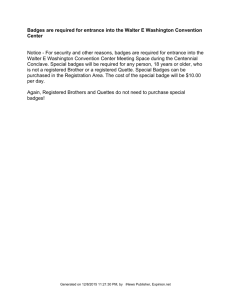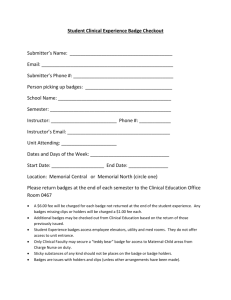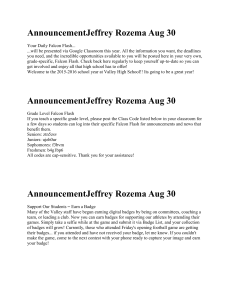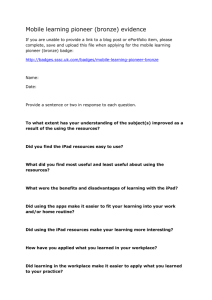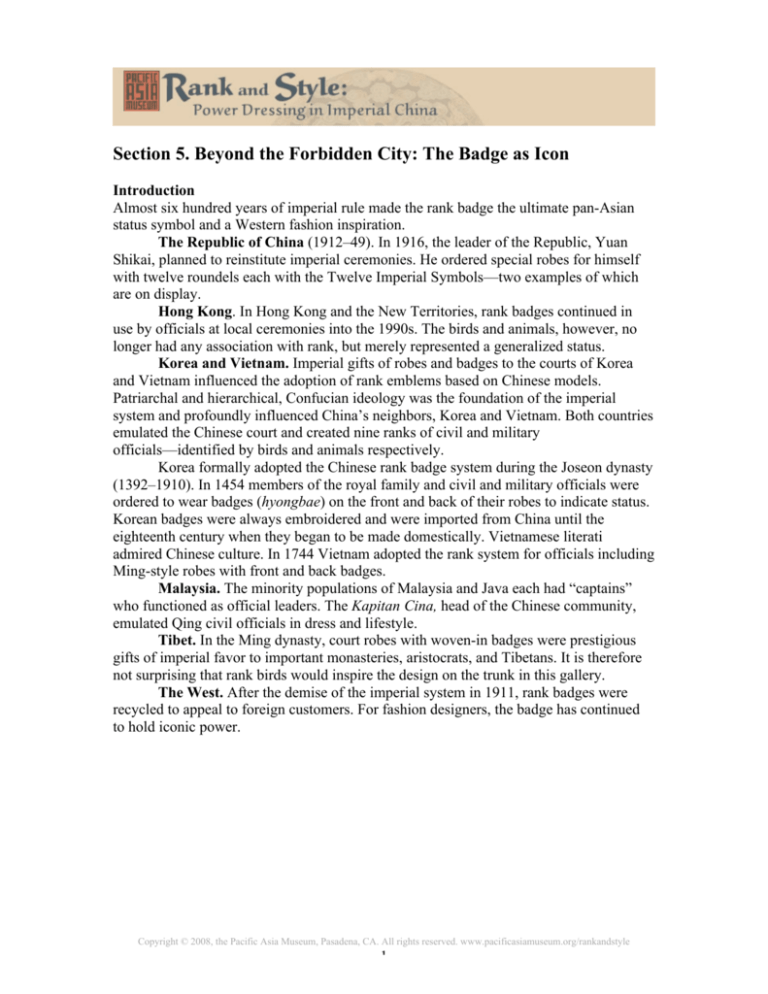
Section 5. Beyond the Forbidden City: The Badge as Icon
Introduction
Almost six hundred years of imperial rule made the rank badge the ultimate pan-Asian
status symbol and a Western fashion inspiration.
The Republic of China (1912–49). In 1916, the leader of the Republic, Yuan
Shikai, planned to reinstitute imperial ceremonies. He ordered special robes for himself
with twelve roundels each with the Twelve Imperial Symbols—two examples of which
are on display.
Hong Kong. In Hong Kong and the New Territories, rank badges continued in
use by officials at local ceremonies into the 1990s. The birds and animals, however, no
longer had any association with rank, but merely represented a generalized status.
Korea and Vietnam. Imperial gifts of robes and badges to the courts of Korea
and Vietnam influenced the adoption of rank emblems based on Chinese models.
Patriarchal and hierarchical, Confucian ideology was the foundation of the imperial
system and profoundly influenced China’s neighbors, Korea and Vietnam. Both countries
emulated the Chinese court and created nine ranks of civil and military
officials—identified by birds and animals respectively.
Korea formally adopted the Chinese rank badge system during the Joseon dynasty
(1392–1910). In 1454 members of the royal family and civil and military officials were
ordered to wear badges (hyongbae) on the front and back of their robes to indicate status.
Korean badges were always embroidered and were imported from China until the
eighteenth century when they began to be made domestically. Vietnamese literati
admired Chinese culture. In 1744 Vietnam adopted the rank system for officials including
Ming-style robes with front and back badges.
Malaysia. The minority populations of Malaysia and Java each had “captains”
who functioned as official leaders. The Kapitan Cina, head of the Chinese community,
emulated Qing civil officials in dress and lifestyle.
Tibet. In the Ming dynasty, court robes with woven-in badges were prestigious
gifts of imperial favor to important monasteries, aristocrats, and Tibetans. It is therefore
not surprising that rank birds would inspire the design on the trunk in this gallery.
The West. After the demise of the imperial system in 1911, rank badges were
recycled to appeal to foreign customers. For fashion designers, the badge has continued
to hold iconic power.
Copyright © 2008, the Pacific Asia Museum, Pasadena, CA. All rights reserved. www.pacificasiamuseum.org/rankandstyle
1
1. Pair of Roundels with Twelve Symbols of Imperial Authority
China, Republic of China (1912-1949), 1916
Silk and metallic thread embroidery; seed pearls, coral beads
Lent by Chris Hall, Hong Kong
In 1916, general Yuan Shikai, first president of the Republic, had himself “elected”
emperor with the reign name Hongxian (“Constitutional Abundance”). Yuan planned to
reinstitute the annual cycle of imperial sacrifices for which he had new robes designed.
His black robe had twelve roundels with the Twelve Symbols of Imperial Authority:
dragons, the sun and moon, a constellation, a mountain, rice grains, libation cups, fire, an
axe, water weeds, a pheasant and the fu character. The robes of his officials had
decreasing numbers of roundels and symbols in descending rank order.
2. Badge (hyungbae) with Single Crane for Fourth to Ninth Civil
Ranks
Korea, Joseon dynasty (1392-1910), mid-19th century
Silk embroidery
Pacific Asia Museum, Gift of Mr. Harvey W. House, 1976.35.90
The Korean court began wearing rank badges in 1454. Around 1730
emblems for civil office were assigned as follows: double cranes for the first through
third ranks and a single crane for the fourth through ninth ranks. Korean badges were not
mass-produced in embroidery workshops as were their Chinese counterparts, therefore
they show less standardization of design than that found in Qing dynasty badges.
3. Badge (hyungbae) with Single Crane for Fourth to Ninth Civil
Ranks
Korea, Joseon dynasty (1392-1910), 19th century
Silk embroidery
Lent by Dodi Fromson
The gracefully soaring crane on this rank badge holding the fungus of
immortality (Chinese: lingzhi, Korean: bullocho) in its beak symbolized the integrity and
pure spirit of the scholar-official. The crane is also a symbol of immortality: the white
feathers stand for old age and the ancient Chinese believed it could live for one thousand
years.
4. Badge (hyungbae) with Two Hopyo for Fourth to Ninth Military
Ranks
Korea, Joseon dynasty (1392-1910), 19th century
Silk embroidery
Lent by Dodi Fromson
A single hopyo, a composite animal combining tiger and leopard,
white with black markings, signified the fourth to ninth ranks of military officers. Two
hopyo were emblematic of first to third rank officers. Korean badges were embroidered
separately and worn on the front and back of court robes which were modeled after those
of the Chinese Ming dynasty.
Copyright © 2008, the Pacific Asia Museum, Pasadena, CA. All rights reserved. www.pacificasiamuseum.org/rankandstyle
2
5. Badge (quanbo) with Crane for First and Second Civil Ranks
Vietnam, late 18th – early 19th century
Silk embroidery
Lent by Dodi Fromson
As the Vietnamese wore side-fastening robes, their front badges did
not need to be split to accommodate a front-opening robe. The
curling water sprays, fungus-shaped clouds and the pose of the crane are all reminiscent
of badges from the reign of Wanli (1573-1620). This supports the contention that the
Vietnamese used the iconography and style of Ming dynasty (1344-1644) badges as a
model for their own.
6. Badge (quanbo) With Rooster for a Third-Rank Civil Official
Vietnam, 19th century
Silk and metallic thread embroidery
Lent by Dodi Fromson
Vietnamese civil rank badges generally had the bird facing to the
viewer’s left and to the right for military insignia. It is unknown
whether wives wore their husbands badges as in China, but this, and other surviving
examples, show the bird facing to the right; that may indicate it was worn by an official’s
wife.
7. Badge with Paradise Flycatcher
Malaysia, probably Malacca, late 19th-early 20th century
Couched metal strips and metallic thread, metal sequins
Lent by Chris Hall, Hong Kong
For official occasions the head of the Chinese community, the
Kapitan Cina, would wear a court hat and a dragon robe under a surcoat with rank badges
on the front and back. This badge, heavily encrusted with metallic thread, was
embroidered in Malaysia loosely following a Qing prototype.
8. One of a Pair of Trunks
Tibet, 17th-18th century
Wood, mineral pigments, gilding, and gesso; metal fittings
Lent by Ruth Sutherlin Hayward
The treatment of the bird on this painted trunk was derived from a Ming-period rank
badge. In the Ming dynasty (1368-1664), diplomatic and trade exchanges between Tibet
and China (called “tribute” by the Chinese) brought large quantities of textiles to Tibet,
including robes with rank badges woven into the fabric. The prestige of the first-rank
crane made it an appropriate decoration for a trunk that probably held precious things,
possibly silks.
Copyright © 2008, the Pacific Asia Museum, Pasadena, CA. All rights reserved. www.pacificasiamuseum.org/rankandstyle
3
9. Badge (buzi) with Paradise Flycatcher for Ninth-Rank Civil
Official
China, Qing dynasty, 1850-60
Silk thread embroidery
Pacific Asia Museum, Gift of Mrs. Paul Hunter, 1981.3.1
10. Woman’s Handbag
China, Republic period, c. 1917
Mixed media
Pacific Asia Museum, Gift of Mrs. Ruth Ann Younglove Loxley,
1977.54.1
After the fall of the Qing dynasty the market for rank badges essentially
collapsed. Unsold badges and those taken off garments were offered to tourists and
foreigners living in China. Many were recycled into furnishing textiles and women’s
accessories. Handbags made of pairs of badges were popular. But some, like this one,
were actually embroidered on one continuous piece of silk to look like two separate, and
therefore real, badges.
11. Man’s Sport Shirt
United States, c. 2006
Printed sandwashed silk cloqué
Anonymous Loan
As this contemporary man’s shirt from a Los Angeles manufacturer
shows, the magic of Chinese court dress and the status of rank badges have not lost their
allure almost one hundred years after the fall of the Qing dynasty.
Copyright © 2008, the Pacific Asia Museum, Pasadena, CA. All rights reserved. www.pacificasiamuseum.org/rankandstyle
4

